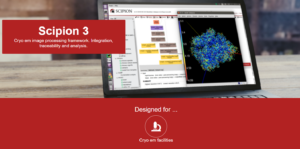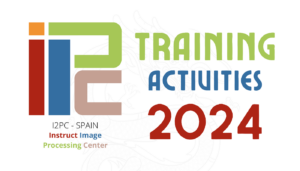Venue
National Center for Biotechnology (CNB), Madrid, Spain.
Madrid, December 09 – 12, 2025
Overall Aims and Course Outline
Cryo-electron tomography (cryoET) is a cutting-edge imaging technique that enables to visualize the three-dimensional structures of biological macromolecules and cellular organelles at nanometer resolution. With this 3D data, scientists can accurately locate macromolecules of interest in the cell and study them in their native state. Subtomogram averaging (STA) is a crucial method in this field, facilitating the extraction of high-resolution structural information from the identified proteins within the tomogram (3D representation of the sample). This course offers participants the theoretical knowledge and the practical skill to undertake cryoET and STA projects.
Expected Impact for Young Researchers
Participants will gain practical, hands-on experience with essential tasks such as tilt-series alignment, 3D tomogram reconstruction, particle identification, subtomogram averaging, and tomogram segmentation.
Over the course of four days, attendees will be introduced to both theoretical concepts and practical applications, allowing them to develop a deep understanding of the workflow from the raw data to detailed 3D visualization.
Tutors
Jose Luis Vilas – Instruct Spain (I2PC). National Center for Biotechnology – CSIC
Daniel Castaño Díez –Numerical Methods of Cryo Electron Tomography Group. Instituto Biofisika – CSIC
Registration Fee
- Academic Registration Fee Instruct countries: Predocs & Postdosc 50€
- Academic Registration Fee Instruct countries: Others 100€
- Academic Registration Fee Non Instruct countries: Predocs & Postdosc 100€
- Academic Registration Fee Non Instruct countries: Others 150€
- Industrial Registration Fee 300€
COURSE CONTENTS
Day 1: From movies to tomograms
- Course introduction and fundamentals of cryoET image processing
- Movie alignment
- Tilt Series alignment: fiducial and fiducialless approaches
- 3D Reconstruction
- CTF estimation and correction
Day 2: Particle Picking methods
- Particle identification: different strategies, particle filtering according to their orientation in the tomogram
- Particle picking of non oriented particles in the tomogram
Day 3: Subtomogram Averaging techniques
- Initial model generation
- Map refinement
- Post-processing and quality Analysis
Day 4: Tomogram segmentation
- Tomogram data analysis and representation
- Segmentation tools
- Discussion with the audience and short talks of the students work








